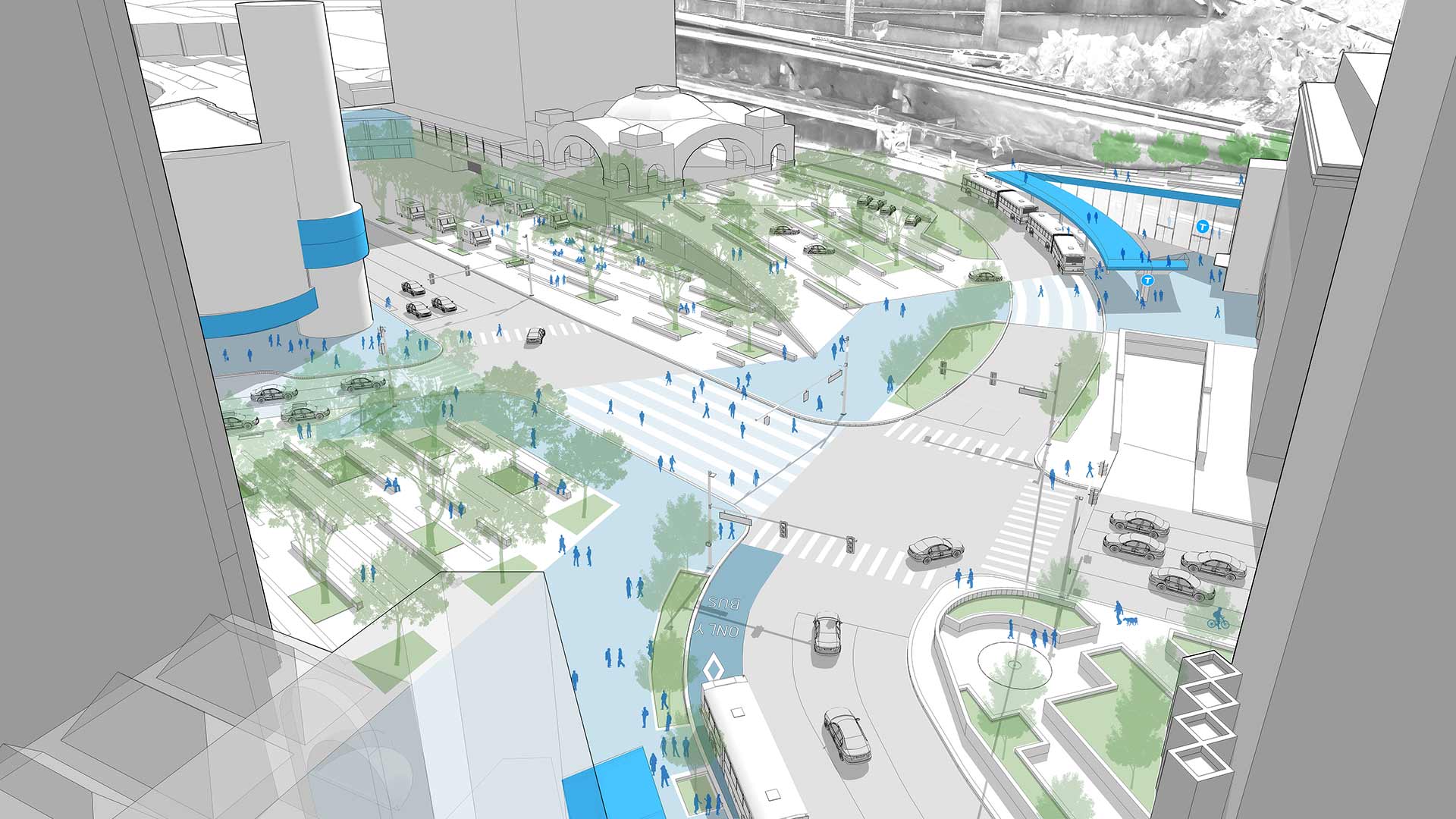Penn Station Transit Plaza Proposed for Downtown Pittsburgh Wins AIA Design Awards
Part of PCRG’s Better Busway Study in partnership with the Port Authority of Allegheny County, the plan is to activate a key anchor to Pittsburgh’s Golden Triangle.
Pittsburgh, PA — The Pennsylvania chapter of the American Institute of Architects has recognized evolve environment :: architecture (evolveEA) with an architectural excellence award for the firm’s redesign of the area surrounding Port Authority’s Penn Station, on Pittsburgh’s MLK East Busway. The design is part of a larger study led by the Pittsburgh Community Reinvestment Group (PCRG) in partnership with Port Authority of Allegheny County, called Better Busway, which aims to leverage neighborhood development along the busway route for a better functioning network and more inviting rider experience. Penn Station, situated at one of Downtown Pittsburgh’s most prominent gateways, is a critical node in the busway network connecting downtown and Pittsburgh’s East End neighborhoods. It has the potential to bring together many existing assets including light rail, region and national buses, and national heavy rail (Amtrak).
As one of Downtown’s portals to the East End, Penn Station is historically a major node in a robust national transit network. Today, few people recognize that local, express, and regional lines are steps away from national services such as Amtrak, Greyhound, and Megabus. This design study details ways to pull these transit assets together into a new transit plaza that can anchor the Convention Center district and connect to places near and far. The state-level award was announced after the project had also won a Certificate of Merit one month earlier from AIA Pittsburgh, the local chapter, and advocates are hopeful this recognition will power momentum toward full implementation of the design.
Penn Station is situated adjacent to some of the city’s largest development opportunities and most important thoroughfares: Liberty Avenue, Grant Street, and the terminus of the 10th Street Bypass, a major highway connector. This project proposes to add color and life to a jurisdictional gray area that should be a more prominent threshold into the city of Pittsburgh. In the absence of clear or unified ownership, the winning design’s vision invites partners to incrementally improve their own part of the station area, creating an improved public plaza in phases. This is the powerful role that advocacy, particularly design advocacy, can play. The public realm in urban environments is frequently not-owned and even dis-owned, leaving behind public spaces that should support vibrancy and diversity. By lending a critical eye and asserting people-centric design principles, designers and advocates can encourage stakeholders to aspire to a more meaningful role in the public realm.
Director of Policy at PCRG, Chris Sandvig’s comments about the project:
Before the auto and well into the 20th Century, northeastern Downtown was a multimodal mashup of streetcar, commuter and intercity passenger trains, pedestrians, freight, and way back, canal boat. Most of these modes are still here, serving those very same functions. What’s missing is the interplay between them and their own connections into the heart of Downtown. The Better Busway Penn Station design challenges that with realistic, feasible changes that connect western Pennsylvania’s most productive transit facility—the East Busway—to intercity and commuter bus, Amtrak, and the rest of the world.
Principal of evolveEA, Christine Mondor said:
Well designed places dignify our infrastructure and make it more effective. Penn Station Transit Plaza, a reinvented portal to Downtown, is designed to be an active and memorable entry point to the city. No other place in the city has as many mobility choices, where people can move by rail, light rail, bus, car, bike, and on foot. The project celebrates our hidden mobility gems with a new gateway to Pittsburgh.
The AIA Pennsylvania Awards Jury commented:
This masterplan presents a skillful resolution to a complicated urban intersection. The team is to be commended for the care and attention that went into making the human experience of moving through the plaza and into the station itself rewarding for both the casual passerby and the determined traveler. The project reinstates Penn Station’s role as an important and gracious transportation center for both the city and the community.


